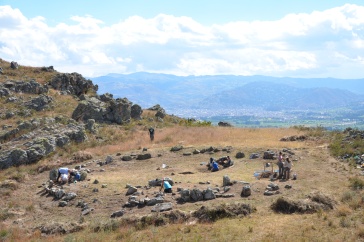
Dr. Meghan Howey
Anthropology Professor Meghan Howey has new publication in PLOS ONE: Detecting Precontact Anthropogenic Microtopographic Features in a Forested Landscape with Lidar: A Case Study from the Upper Great Lakes Region, AD 1000-1600
Quoting from the Abstract: "Forested settings present challenges for understanding the full extent of past human landscape modifications. Field-based archaeological reconnaissance in forests is low-efficiency and most remote sensing techniques are of limited utility, and together, this means many past sites and features in forests are unknown. Archaeologists have increasingly used light detection and ranging (lidar), a remote sensing tool that uses pulses of light to measure reflecting surfaces at high spatial resolution, to address these limitations. Archaeology studies using lidar have made significant progress identifying permanent structures built by large-scale complex agriculturalist societies. Largely unaccounted for, however, are numerous small and more practical modifications of landscapes by smaller-scale societies. Here we show these may also be detectable with lidar by identifying remnants of food storage pits (cache pits) created by mobile hunter-gatherers in the upper Great Lakes during Late Precontact (ca. AD 1000–1600) that now only exist as subtle microtopographic features."
-
Written By:
Meghan Howey | Department of Anthropology | meghan.howey@unh.edu | (603) 862-2518

















































